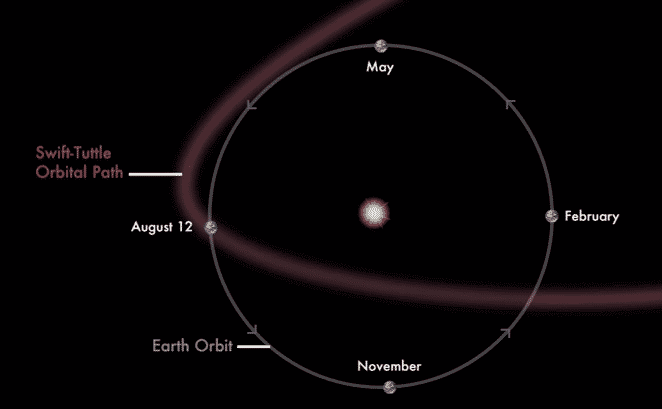

The Perseid Meteor Shower, nature’s annual late-summer treat, peaks Aug. 12 – 13 this year, during an obscuring waning gibbous moon, but a night owl’s timing and strategic use of “moon shadow” can still win a good show as the Earth travels through the remnants of comet Switft-Tuttle this year.
The Perseids will peak during the evening Aug. 12 and early morning of Aug. 13, according to Timeanddate.com.
Interested meteor watchers should focus their viewing between midnight and dawn, and get as far away from city and town lights as possible. The Frosty Drew Observatory in Charlestown (the best spot in the state for stargazing with the least light pollution within the borders) will host their viewing event of the Perseids after sunset Friday Aug. 11 and through the early morning hours of Aug. 13 – bring blankets, sweaters and snacks.
On Friday night, Frosty Drew opens the Observatory and Sky Theatre at 7:30 p.m. with their regular Stargazing Night event. In the Observatory, telescopes will showcase the night sky starting at sunset and continuing until 11 p.m. with views of Saturn, Mars, the Moon, binary stars, and more. After 11 p.m. viewers will make their way outside to view the meteors. Portable telescopes may be available throughout the night with views of deep sky objects. The Sky Theatre will remain open all night with videos and showcases of celestial objects photographed at Frosty Drew Observatory.
On Saturday night, Frosty Drew will open after sunset to observe the shower. In the Observatory, telescopes will showcase Saturn and the Moon until 11 p.m. after which they will step outside to watch meteors streak by.
Regardless of where you do your viewing, the waning gibbous moon will show off about 86 percent of the moon’s full luminosity, according to calendar-12.com. That’s enough light to dim shooting stars, unless you follow the advice of Earthsky.org, and position yourself within a moon shadow – the shadow of a building or row of trees – that will block the moonlight from your view.

What are the Perseids?
The Perseids and the spectacular meteor shower show they’re known for are created by the debris field from Comet Swift Tuttle, which the Earth passes though every August. Pieces from the comet, meteors, strike the Earth’s atmosphere at 132,000 mph, burning up and creating the fireball effect, according to NASA.gov.
(Meteorites are meteors that survive their firey encounter with the atmosphere and strike the Earth.)
The Perseids were named so because the meteors viewed appear to be approaching from the constellation Perseus.
Where to view:
- Frosty Drew Observatory 61 Park Ln, Charlestown, RI (401) 364-9508
- Any spot far from city/town lights. The farther you get from town, the better your view will be.
When to view:
This week the best days for viewing fall on Aug. 11 and Aug. 12, just after midnight.
Tips:
- Bring a blanket and something to prop your head up as you watch for meteors.
- Remember, state parks close at dusk, so while those areas are far from light pollution, you won’t be able to go in.
- This is a good night to let the other guy drive so you can just look up.
- If you see a very slow, bright object sailing across the sky, it’s either a satellite or a Space Station.
This is a test
